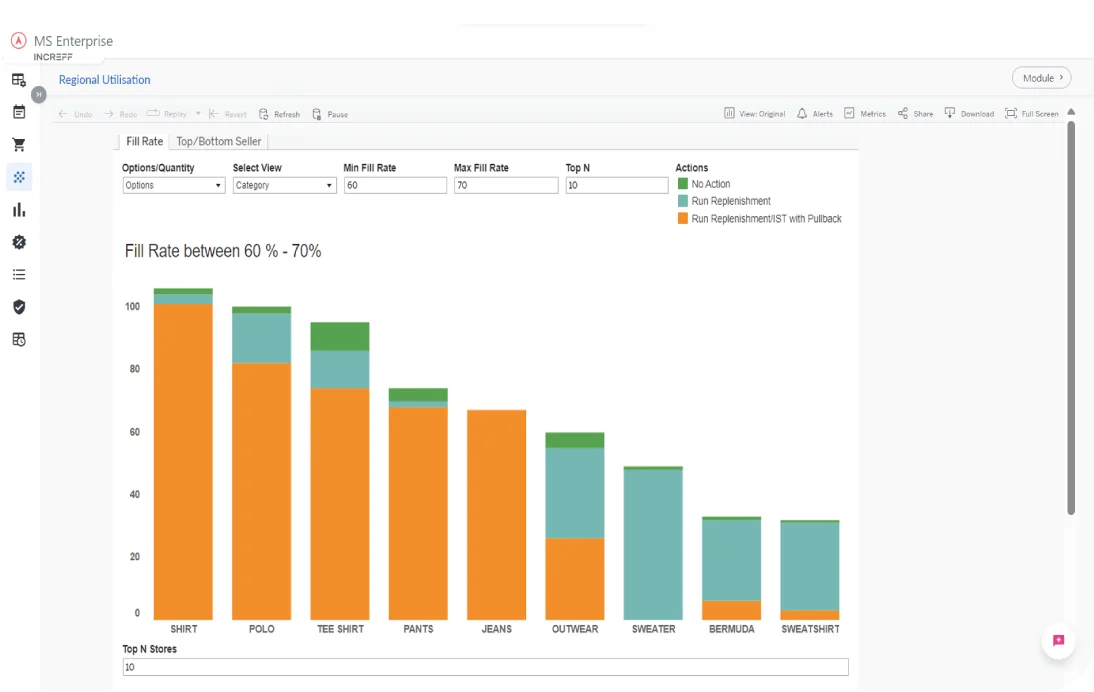Regional Utilization
Optimize inventory distribution in a multi-warehouse network. Enhance proximity to customers, minimizing delivery time and logistics expenses effectively.
12%
Savings in logistics cost
30%
Faster deliveries of orders
70%
Air shipments converted to surface
100%
Accurate new warehouse recommendations
Features of Multi Warehouse Inventory Management
Enhance customer proximity using data for maximum conversion
Customer pincode level demand pattern
New style distribution
Demand-based inventory distribution
Warehouse capacity and target cover consideration
Available for offline stores

Value we add
- Enhance marketplace visibility through local demand optimization leading to increased conversions
- Reduce inventory returns by timely order fulfillment and enable rapid re-commerce
- Drive sustainability by reducing air transport and excess inventory waste
- Enable faster and more flexible deployment with country-wide processing
Explore Similar Merchandising Software Solutions
Case Studies - Merchandising Software Solutions
A Leading Sportswear and Lifestyle Brand Achieved 10% Improved Inventory Health Through Algorithm-Based Inter-store Transfers
It’s almost impossible to sell deadstock after an EOSS sale. WRONG.We, at Increff found a way. We recently...
The Perfect Match with Increff
A rapidly expanding fine jewelry brand, specializing in silver, gold, and lab-grown diamonds, it swiftly...
Inventory Optimization: Increff<>Jaypore
Jaypore, a brand under Aditya Birla Fashion and Retail, utilized Increff Merchandising Software from...
Revolutionizing Supply Chain Operations: Increff <> Globalbees
GlobalBees is one of the leading e-commerce aggregators in India with a portfolio of 55+ D2C brands....
The Indian Garage Co.: Scaling New Heights in D2C Fashion with Increff
The Indian Garage Co. (TIGC) has established itself as a trendsetter in India’s D2C fashion landscape....
Damensch Optimizes Warehouse Management with Increff
Dedicated to excellence, Damensch stands out as a premier menswear brand, celebrated for its fusion of...
Puma Enhances Warehouse Operations with Increff
Puma, a renowned global sportswear brand celebrated for its groundbreaking and high-performance athletic...
A celebrity-endorsed fashion brand increases full-price sell-through by 13% with a smart assortment plan
Optimized inventory through the smart assortment planning for different sales channels. One of India’s...
One of the trendiest retail brands builds efficiency in Warehousing to achieve ~50% reduction in manpower cost
One of India’s largest retail brands and the powerhouse of some of the trendiest and exclusive international...
Global Footwear giant improves inventory turns by 2-3x with easy Multi-system Deployment
One of the world’s leading sportswear brands was facing operational hassles working on multiple systems...



